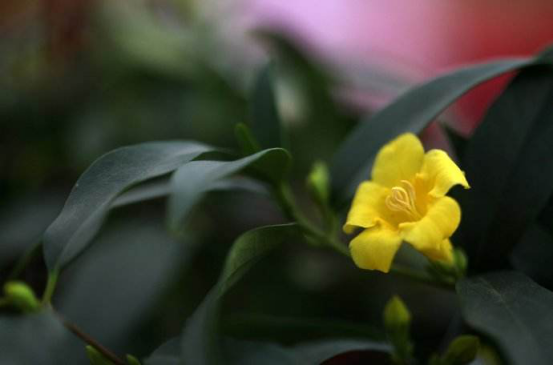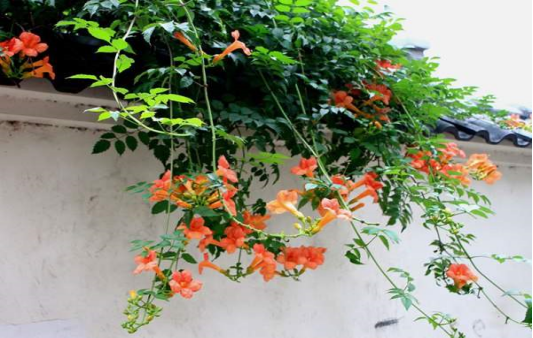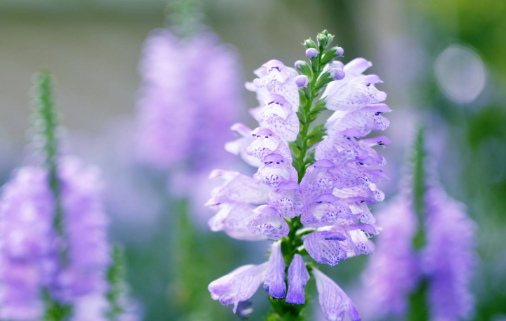Culture methods of perfume flowers in France:
1. Humidity and temperature: for the requirement of humidity, it likes to grow in a relatively humid place, so we should pay attention to keep the soil moisture sufficient, but not too moist; for the temperature, it is recommended to keep it at about 20 degrees Celsius.
2. Soil and light: it likes to grow up in a breathable and fertile soil, and its ph should be kept at about 6.0. For light, love places with plenty of sunshine
3. Fertilization and diseases and insect pests: do not apply fertilizer frequently, at the same time, natural organic fertilizer should be selected. The probability of occurrence of diseases and insect pests is relatively low, but it is easy to cause harm such as mites, so protective measures should be taken in time and medicament treatment should be given.

French perfume is just like its name, its fragrance is fluttering. If you can put a pot at home, it must be able to add a lot of fragrance to the home. And its fragrance is non-toxic, usually take protective measures and put in a ventilated place, there is no need to worry too much! Plant French perfume flowers quickly!
How to grow French perfume flowers
Culture soil of perfume in France
French perfume flowers are suitable for growing in peat soil or rotten leaf soil with good air permeability and loose and fertile soil.
Culture temperature of perfume in France
The suitable growth temperature of French perfume is about 18-28 ℃, and the night temperature is relatively low, which can be kept at 10-20 ℃.
When the temperature is too high or too lower than the above two ranges, the growth will be restricted, especially when the long-term temperature is too low, it will enter a dormant state, the new seedlings are relatively less resistant to cold, and the leaves will fall dormant when the temperature is lower than-3 ℃.
The two-year-old stout plant can withstand the low temperature of-20 ℃. The development temperature of flower buds is suitable at 15-20 ℃, and the night temperature is not lower than 10 ℃, otherwise the flower buds will gradually wither and wither.
Growth Illumination of French perfume
French perfume flowers are sun-loving and light-loving plants, so they are not suitable for long-term growth in the shade, but they should not be exposed to too high temperatures in summer and need to be covered by 50%, 70% shading nets, but excessive shading will also affect the postponement of its flowering.
Water demand of French perfume flowers
French perfume flowers should keep the potted soil dry and wet, and do not accumulate too much water, otherwise it will cause root damage such as rotten roots.
French perfume fertilizer
Compound fertilizer with nitrogen, phosphorus and potassium can be applied during the seedling period to keep the EC value of the medium in the range of 0. 8-1. 0
The EC value of medium should be between 1.5 and 1.8 when nitrogen, phosphorus and potassium compound fertilizer is applied during the period of middle and large seedlings.
The EC value of medium kept in the range of 1.2-1.5 when nitrogen, phosphorus and potassium were applied at flowering stage.
Disease and pest control of perfume flowers in France
The growth of French perfume flowers is accompanied by a variety of diseases and insect pests. In addition to the use of chemicals for control, the application of water is also the key.
Anthracnose is the main disease in summer, while powdery mildew is easy to be caused in spring and autumn, and gray mold is plagued in winter, so it is necessary to spray calcium and boron on physiological fallen flowers. There are relatively few pests, but we should also guard against the larvae of moths and butterflies.
How to grow French perfume flowers
Culture soil of perfume in France
French perfume flowers are suitable for growing in peat soil or rotten leaf soil with good air permeability and loose and fertile soil.
Culture temperature of perfume in France
The suitable growth temperature of French perfume is about 18-28 ℃, and the night temperature is relatively low, which can be kept at 10-20 ℃.
When the temperature is too high or too lower than the above two ranges, the growth will be restricted, especially when the long-term temperature is too low, it will enter a dormant state, the new seedlings are relatively less resistant to cold, and the leaves will fall dormant when the temperature is lower than-3 ℃.
The two-year-old stout plant can withstand the low temperature of-20 ℃. The development temperature of flower buds is suitable at 15-20 ℃, and the night temperature is not lower than 10 ℃, otherwise the flower buds will gradually wither and wither.
Growth Illumination of French perfume
French perfume flowers are sun-loving and light-loving plants, so they are not suitable for long-term growth in the shade, but they should not be exposed to too high temperatures in summer and need to be covered by 50%, 70% shading nets, but excessive shading will also affect the postponement of its flowering.
Water demand of French perfume flowers
French perfume flowers should keep the potted soil dry and wet, and do not accumulate too much water, otherwise it will cause root damage such as rotten roots.
French perfume fertilizer
Compound fertilizer with nitrogen, phosphorus and potassium can be applied during the seedling period to keep the EC value of the medium in the range of 0. 8-1. 0
The EC value of medium should be between 1.5 and 1.8 when nitrogen, phosphorus and potassium compound fertilizer is applied during the period of middle and large seedlings.
The EC value of medium kept in the range of 1.2-1.5 when nitrogen, phosphorus and potassium were applied at flowering stage.
Disease and pest control of perfume flowers in France
The growth of French perfume flowers is accompanied by a variety of diseases and insect pests. In addition to the use of chemicals for control, the application of water is also the key.
Anthracnose is the main disease in summer, while powdery mildew is easy to be caused in spring and autumn, and gray mold is plagued in winter, so it is necessary to spray calcium and boron on physiological fallen flowers. There are relatively few pests, but we should also guard against the larvae of moths and butterflies.
- Prev

Propagation of Campsis
Campsis flower is very suitable for potted planting to beautify the home environment, mainly with cuttage propagation, the depth of half of the cuttings, but also available layering and subplant propagation. The climate in the south is pleasant, so you can cut off the branches and buds of the year directly and insert them in the soil, and they will survive soon. Suitable seasons are generally in spring and autumn
- Next

Random grass diseases and insect pests
The disadvantage of random grass is that it is vulnerable to rot, leaf spot and rust. It can be said that the weakness of cattle on the stem and root is also on the stem and root. Once the above problems are found, they should be removed and burned in time to prevent infection. Other minor problems can be dealt with with 65% Dyson zinc wettable powder. After reading this article
Related
- Fuxing push coffee new agricultural production and marketing class: lack of small-scale processing plants
- Jujube rice field leisure farm deep ploughing Yilan for five years to create a space for organic food and play
- Nongyu Farm-A trial of organic papaya for brave women with advanced technology
- Four points for attention in the prevention and control of diseases and insect pests of edible fungi
- How to add nutrient solution to Edible Fungi
- Is there any good way to control edible fungus mites?
- Open Inoculation Technology of Edible Fungi
- Is there any clever way to use fertilizer for edible fungus in winter?
- What agents are used to kill the pathogens of edible fungi in the mushroom shed?
- Rapid drying of Edible Fungi

